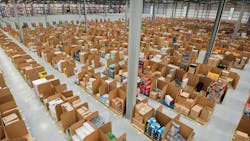Amazon Taking Residence in a P&G DC?
Amazon is making news by taking up residence in a P&G DC to do direct e-commerce fulfilment of P&G CPG items? Is this an indicator of a larger trend or only something that an Amazon can do?
Tompkins International Supply Chain Consultants
We have been tracking Amazon Flex for about six months. Although Amazon Flex has been invisible until now we have known about it due to folks being hired and CP companies being approached by Amazon. At this point it’s not a trend, just an amazon experiment going to a next phase of roll out. Other retailers cannot do what amazon does. They need to realize the changing landscape and find their own counteroffensives and make something good happen instead of wishing they were amazon. This is just wave 2 of fulfilment centers being integrated into distribution centers. The problem is most retailers have yet to figure out wave 1.
3PLs thrive on economies of scale. For instance, transportation brokers provide a service by having contracts and connections with thousands of carriers. As an individual shipper, it is likely you won’t have the time or resources to establish all of those relationships. Likewise, brokers also have connections with manifold shippers, something that carriers might not have the time or resources to establish. So the advantage of scaling across many shippers and many carriers provides the opportunity for a middleman (i.e. 3PL) to provide value that would not exist otherwise. Similarly for warehousing, customs clearance, international shipping, etc. These are all areas that 3PLs have thrived, and for good reason.
Where they will likely not succeed are areas that are specialized for your industry. Naturally, these specializations are often where your company’s competitive advantage lies, so you likely would not want to outsource those tasks to a 3PL. So when thinking of when and where to use a 3PL, ask yourself these questions: is this task a source of competitive advantage for me? Are there other companies that are using a 3PL for this type of service? Would a 3PL be able to do it cheaper than me? If so, why?
Founder
Collaborative Energizer LLC
This could be a trend, but it will take time for this major initiative to play out. It may be applicable to high volume products, but the complexities of forecasting by multiple replenishments points will have to be addressed.n (i.e. 3PL) to provide value that would not exist otherwise. Similarly for warehousing, customs clearance, international shipping, etc. These are all areas that 3PLs have thrived, and for good reason.
Join the ConversationShare your insights and opinions on the questions and the Experts answer(s). You must be logged in to the website in order to post your comments.


